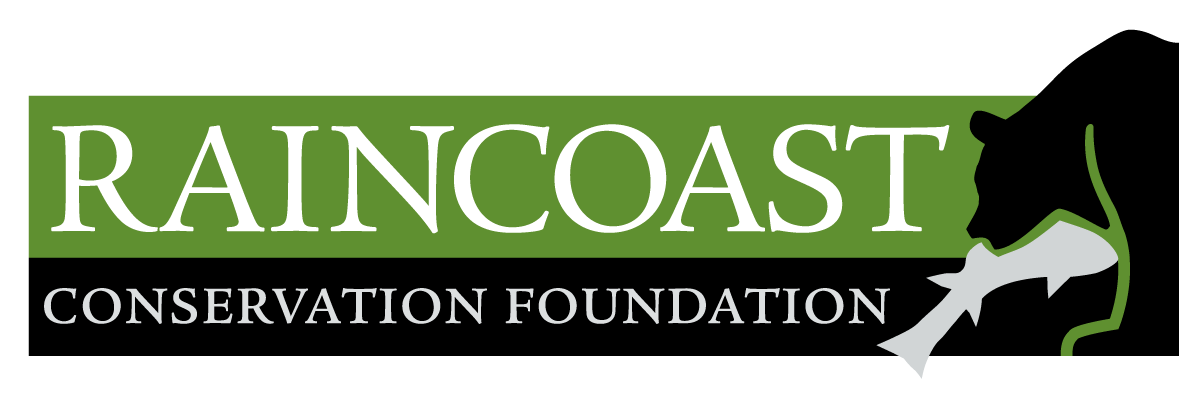Increases in high-severity wildfire have implications for water and fish: report
A community-driven forestry model offers a pathway to wildfire resilience and watershed security under a changing climate.

VANCOUVER / UNCEDED xʷməθkʷəy̓əm (MUSQUEAM), Sḵwx̱wú7mesh (SQUAMISH), AND səlilwətaɬ (TSLEIL-WAUTUTH) TERRITORIES — A new Raincoast Conservation Foundation report Forests, Fire, and Fish: Policy pathways to manage forests for wildfire resilience, Pacific salmon recovery, and watershed security, provides the first comprehensive analysis of how the drivers of severe wildfire – including industrial forestry, fire exclusion, and climate change, affect watershed security and salmon habitat in British Columbia.
Recent wildfire seasons in Canada highlight the importance of increasing ecological resilience to wildfire, particularly within drought-affected watersheds. While Pacific salmon have adapted over millennia to historical fire regimes—and can benefit from low- to moderate-intensity fires—today’s larger, hotter, and more frequent fires may exceed their adaptive capacity. When combined with other anthropogenic stressors, these wildfires can contribute to cumulative effects that raise concerns for the long-term viability of some populations.
“High-severity wildfire is not only a forest issue — it’s a water and fish issue,” said Kristen Walters, lead author and Director of Salmon Habitat, Climate, and Policy at Raincoast Conservation Foundation.
Between 2017 and 2023, numerous wildfires burned in critical spawning and rearing habitats in the upper and middle Fraser River sub-basins. In 2021, 90% of the Deadman River watershed burned, which supports endangered Lower Thompson stream-type Chinook salmon. This population is an important prey resource for Southern Resident killer whales, which are listed as endangered under both Canadian and U.S. law.
Climate change is expected to lengthen wildfire seasons in some regions by 2100, and the annual area burned is projected to be two to four times higher than in recent decades. These shifts can pose challenges for forests, watersheds, and salmon populations that support communities, cultures, and economies across BC.
However, there are solutions. In fire-adapted ecosystems, or where there is a fire deficit, putting more beneficial fire on the landscape and transitioning to community-based forestry can bolster ecosystem resilience to fire and support fish habitat.
This report outlines evidence-based policy pathways to achieve this vision at the watershed and landscape-scales:
- Increase and sustain funding for cultural burning and Indigenous Guardian programs to enable landscape-scale Indigenous Fire Stewardship.
- Increase the amount of beneficial fire on the landscape.
- Establish permanent mechanisms for old-growth protection by expanding provincial parks, conservancies, ecological reserves, and legally designated Old Growth Management Areas.
- Transition forestry from clearcutting to a selection silvicultural system that can sustain species diversity, maintain watershed hydrology, and reduce the risk of high-severity wildfire.
- Recognize community forests under the Forest and Range Practices Act with distinct tenure, enabling them to practice ecosystem-based forestry that prioritizes watershed security and wildfire risk reduction.
- Expand riparian protections by providing Riparian Reserve Zones for small non-fish headwater streams under the Forest and Range Practices Act and prohibiting all logging following wildfire events in riparian areas.
- Expand funding for pre- and post-wildfire habitat restoration and scientific research in salmon-bearing watersheds.
Walters shares:
“To date, the discussion on wildfire in BC has paid little attention to its effect on watersheds and freshwater species – which has implications for drinking water, flood control, and at-risk salmon populations. Our report fills that gap by linking the drivers of contemporary wildfires to watershed impacts. It also provides policy recommendations to improve forestry practices that can better support watershed security and salmon habitat under a changing climate.”
Citation
K Walters. 2025. Forests, fire, and fish: policy pathways to manage forests for wildfire resilience, salmon recovery, and watershed security. Raincoast Conservation Foundation. https://doi.org/10.70766/4781.87
Raincoast Conservation Foundation is a team of scientists empowered by our research to protect the lands, waters and wildlife of coastal British Columbia. We use rigorous, peer-reviewed science and community engagement to further our conservation objectives.
